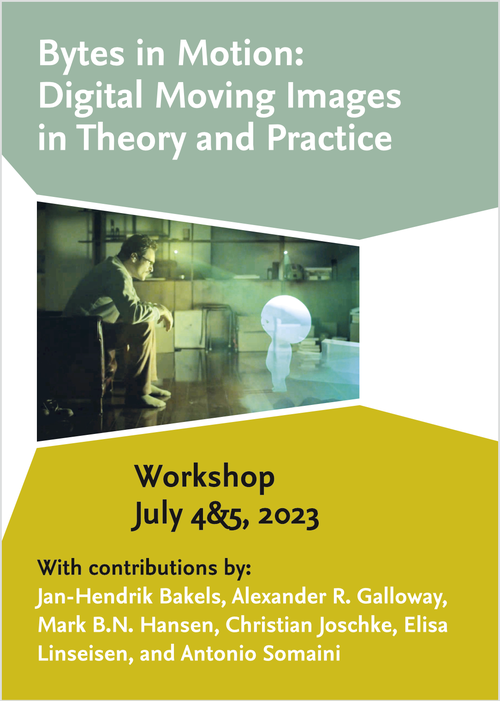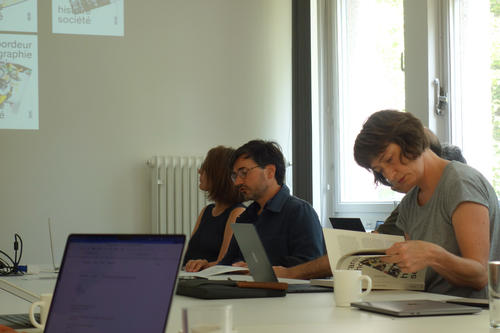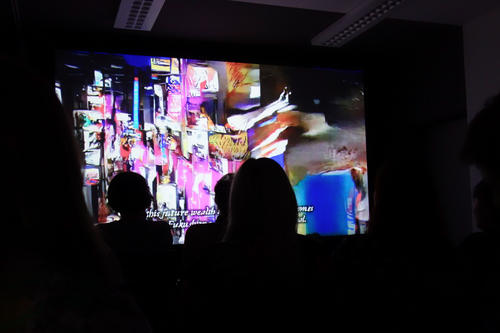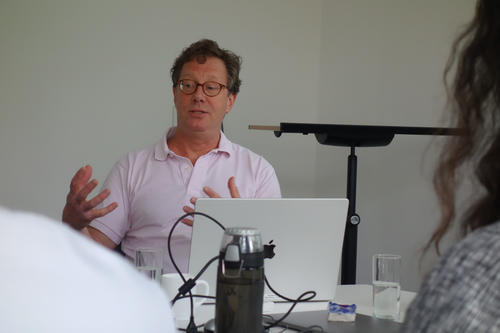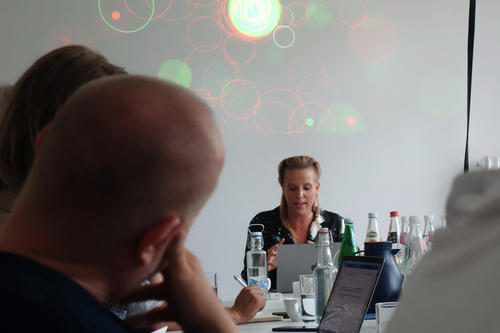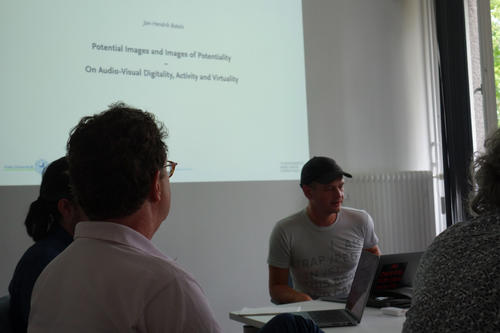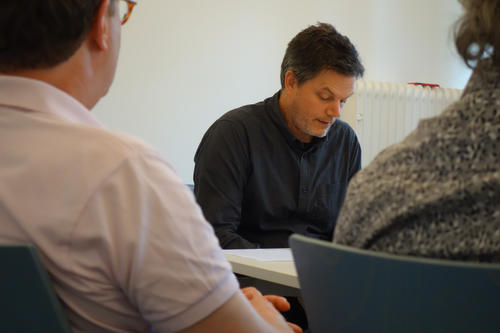Bytes in Motion
04. & 05.07.2023 | Workshop by the Cinepoetics group with Jan-Hendrik Bakels, Alexander R. Galloway, Mark B. N. Hansen, Christian Joschke, Elisa Linseisen, and Antonio Somaini
Research Focus: Digital Cultures of the Moving Image
Addressing the fast pace of the changing digital landscape, the first day of the two-day workshop started with a short introduction, raising questions concerning the double coding of images as something to be perceived by humans and machines, as well as the consequences for moving images, being located within the digital realm.
In the first input presentation on “Composite Images: Fragments for a History,” Christian Joschke used images AI-generated images that refer to photographic methods as a starting point to focus on composite images and techniques to synthesize and subtract images. Following this, he focused on the phenomenon of latent space in large-language-models. Further broadening the notion of images made out of images, Joschke raised questions on variating data sets and ai methods leading to a possible genealogy of machine vision within the history of algorithms.
Antonio Somaini’s presentation began with a screening of short films by artists Trevor Paglen, Hito Steyerl and Grégory Chatonsky. Somaini referred to different artificial learning networks, starting from their training methods as well as their ways of image processing and next frame prediction, showcasing hybrid images that visualize latent space.
The day ended with a group discussion on aspects of comic relief in AI-generated images, resulting in a tension between the absurdity and seriousness often combined within the depictions. The group went on to think about Steyerls notion of the non-fascist image, asking questions about the potential politization of these AI-generated images.
The second day started with Mark B. N. Hansen’s presentation on “Media as Process: Some Implications” that understood media as a process entangled with humans, focusing on a sense of togetherness. Thinking media technologies as abstractions of technical processes, he used Whitehead’s notion of societies to point out that these processes are lived or experienced by enduring entities and that they inherent a certain potentiality. Therefore, understanding these societies as abstractions, technical media itself is an abstraction from that process. This led to the question whether societies can have an agency in a way that they can design their own existence through technology. Using sense perception as an example of abstraction, he furthermore raised the question of reality and if it can be reduced to what can be perceived through the senses. In conclusion, he pointed out a shift from probability to possibility, opening up a variety of potentiality that leads to a wider imaginative space than that of human language and consciousness.
Elisa Linseisen’s presentation “From Poor Images to Power Images. Politics of High Resolution” focused on media politics in digital images with regard to higher image resolution. She used the first (generated) image of a black hole as a starting point, analyzing its process of formation as well as the technical difficulties in creating an image of something invisible, concluding with the process of generating the “picture” with help of large language models. Thinking of each image as a multitude, Linseisen focused on different representations of reality within these images. Addressing trends of fragmentation and disintegration, the “power image” (Steyerl) of the black hole becomes a “poor image” by way of recontextualizing the image within the digital culture. Furthermore, she looked at hegemonic media platforms and their monopolistic structures, pointing out a form of individualistic isolation and fragmentation of images by their users.
In the following presentation, “Potential Images and Images of Potentiality. On Audio-Visual Digitality, Interactivity and Virtuality,” Jan-Hendrik Bakels referred to three different dimensions of virtuality: space, time, and the body. He outlined forms of cinematic aesthetic experiences of virtuality and their bodily experience as a spatial temporal cinematic feeling of depth, as something oppositional to closure. Talking about activity and intentionality, he pointed out that the poiesis as an active act of watching film includes different tonalities, organizing the mediated experiences of retention, pro-consciousness and protention. Therefore, Bakels sees digitality as a mode of production of cinematic images which has altered the cinematic culture. Thus, the moving image as an object of intentionality becomes a subject matter of the phenomenological reflection of temporality as well as the virtual-actual experience.
In the final presentation on “Neural Nets & Blurry JPEGs,” Alexander R. Galloway broke down different functions and technicalities of neural nets, focusing on how immense data sets turn into a relatively small, effective output. Linking this compression technology to potential political impacts, Galloway pointed out the reliance of inducted methods, as the values that might be embedded into the net will be a part of the outcome. In addition, he went on by addressing this type of work in terms of human labour, stating that one cannot escape the human part as most training data comes from human sources, which leads to questions of value, meaning and quality.
The closing discussion revolved around alternative ways of perceiving digital images within a political context. Questions were raised on how to locate the moving image within the movement created by neural nets, linking it to questions on digital temporality and space as being part of the moving image.
